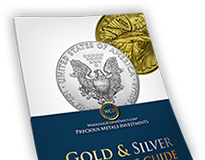- Gold $0.00 $0.00
- Silver $0.00 $0.00
- Platinum $0.00 $0.00
- Palladium $0.00 $0.00
Pricing:
| QUANTITY | E-CHECK/WIRE | CREDIT CARD |
|---|---|---|
| Any | $14,000.00 | $14,583.80 |

Get Our Free
Gold & Silver
Investor's
Guide
Description:
Adding this $1 Gold Princess Type 2 coin to your collection won't only add value, but will tell a rich history that dates back to America's early years. In 1799, a young boy named Conrad Reed was playing on his family's farm in Cabarrus County, North Carolina when he discovered a gold nugget. Because gold was not a common sight, the value of the nugget was unknown, and for years the Reed family used it as a doorstop in their home. It wasn't until 1802 that Conrad's father, John, took the nugget to a jeweler who offered to buy it from him for $3.50, roughly a one week wage for a farm laborer. Once he learned of the value of the resources on his land, he entered into a partnership with several others to begin the hunt for gold. By 1824, over 2,500 ounces of the precious metal had been deposited at the Philadelphia Mint.
Further gold was discovered in 1829 in North Georgia, leading to tensions between the Cherokee who resided on the land and various states. Over a short space of time, there was a forced migration of Native Americans that came to be known as the Trail of Tears. The opening of the Dahlonega Mint occurred at the same time as the removal of the last Cherokee Indians from Georgia, and it was, in fact, their word for either yellow or golden, talonega, which gave the town its name. A further gold discovery in 1849 at Sutter's Mill, California, forced Congress to increase the use of gold in U.S. coinage and on March 3 that year, legislation was passed to authorize the production of gold dollars and $20 double eagles.
From 1849 until the Civil War the gold dollar was a workhorse denomination. The 13mm diameter Type 1 gold dollars were used in everyday change and most of these that are still around today are incredibly worn. In 1854, these were enlarged to 15mm to make the coin more convenient to handle and the Indian Princess design that was introduced in that year created problems such as dies not being able to flow into the deep recesses of Liberty's portrait as well as the design on the coin's reverse. To correct this, the Type 2 with a shallower relief was created in 1856, and these are the scarcest of the three design types with a mintage of fewer than 2 million pieces.
Longacre designed the obverse of the new Type 2 dollar coin based on the work that he had done on the $3 piece. The head is commonly referred to as an Indian Princess which gives the coin its name, but historians have suggested that Longacre actually based it on a Roman marble figure before adding the headdress. This marble figure was the Crouching Venus, a statue on display at the time in the Philadelphia Museum. On the reverse of the coin, Longacre has designed an agricultural wreath that incorporates produce from the North and the South - cotton, corn, tobacco and wheat can all be seen.
Features of the 1855-O $1 Gold Princess Type 2 NGC MS62
- US - New Orleans Mint
- Denomination: $1
- Certification: MS62 NGC
- Reverse: An agricultural wreath encircling the denomination and the year of issue
- Obverse: Left-facing portrait of an Indian Princess
- Purity: .900
- Diameter: 14.3mm
- Edge: Reeded
Specifications:
| Product Type | Coin |
|---|---|
| Coin Series | Pre-33 Gold |
| Purity | 90% |
| Mint/Refinery | U.S. Mint - New Orleans |
| Mint Mark | O - New Orleans |
| Metal Type | Gold |
| Face Value | $3 |
| Grade | MS62 |
| Coin Type | Certified |
| Modern or Historical | Pre-33 |
| Grade Service | NGC |
| Year | 1855 |
| Metal Weight | 0.4838 troy oz |






